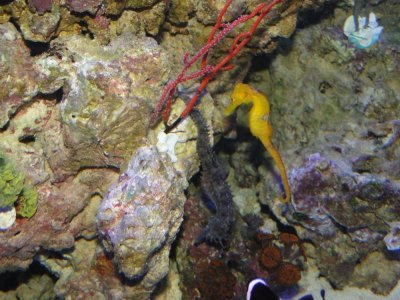steelcaveman
New member
H. erectus ought to be that broad-chested at that size, although some captive bred take longer to get there. H. ingens are never that broad-chested, and since they reach 10 - 12 inches, are likely to still be very juvie-like (thin and gangly) at that stage.
If you don't believe my assessment (and I don't blame you, you don't know me from adam, and I'm not technically qualified), what I would direct you to do is to look at the morphological identifying features like coronet shape, the eye spines, and the cheek spines, among others, as a starting off point. Looking at the standards put out by project seahorse for seahorse identification, and then comparing to your seahorse.
Thanks.
I want to see if it changes in size and features over the next few months.
While I am being told it is an Ingen, from what I consider to be a very reliable source, I do have my own doubts. This thread re-affirms the doubts. Just looking at it, I think it is some type of an Erectus hybrid. There are many different types of seahorses that are bred locally in my area - Dallas, TX - so I do see lots of 3 inch seahorses including Erectus.
I may need to have a local seahorse enthusiast come over and take a look.

